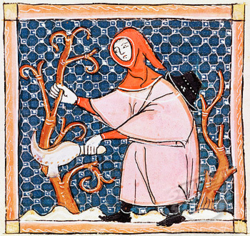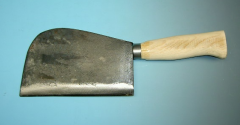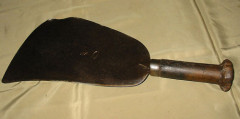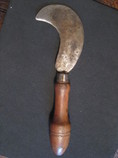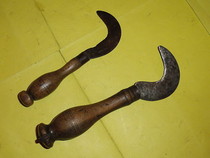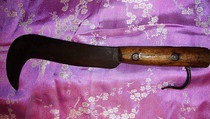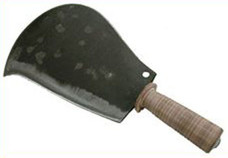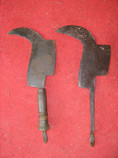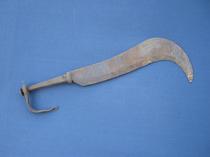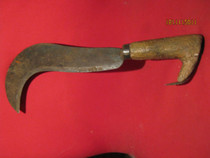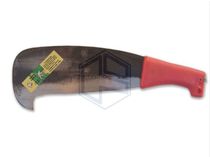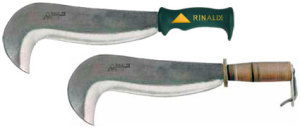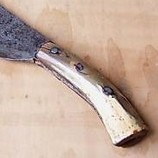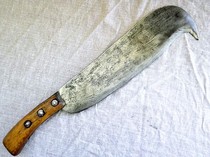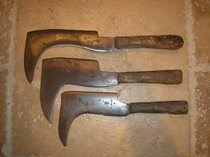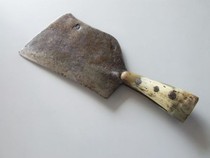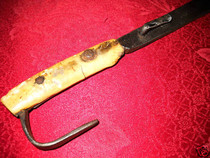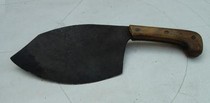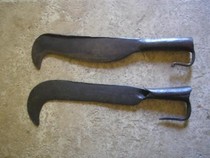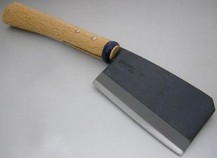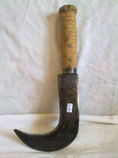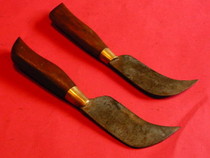Non UK Handles
Although the caulked handle is not unique to the UK, those from other countries differ in shape. Round handles similarly often differ in profile and length to those from the UK. Other materials than wood are often found, especially on handles of the 'scale' type, where the side pieces of the handle are rivetted to the cheeks of a wide tang.
This billhook from the Venice region of Italy has a handle made of 'rondelles' of leather that are compressed and riveted at the end with a large washer. This type of handle is found in Italy, France, Austria and parts of Germany. It is now common in the UK, mainly on imported billhooks, many of which are cheap copies made in India and Pakistan.
